Senior Show 2023
Visual Arts graduates present their final work.
In the week before graduation, Usdan Gallery was packed shoulder to shoulder with Bennington College seniors eager to show their work and family, friends, classmates, and local art enthusiasts eager to admire it.
The Senior Show is an annual tradition that provides an opportunity for students to exhibit in the storied Usdan Gallery. The works are evidence of the graduates’ technical skill, emotional representations of their Bennington years, their own maturing identities, and how they relate with others. A wander through the gallery offered encounters with a few of the artists and their stories.
Not far from the entrance of Usdan, Raven Realmuto ’23 stood near her sculpture while posing for photos with friends. Realmuto is a Bennington native who has worked in ceramics since middle school. Making functional pieces came to serve as a valuable emotional outlet and a way to cope with everyday stresses. Her ceramics work was her “security blanket,” she said.
When her mother passed away unexpectedly, she was moved to make her first sculptural piece, which represents their final moments together.
“She was lying in the hospital bed and I was sitting on the floor, reaching up and holding her hand,” Realmuto explained. “When you lose someone, the feelings and emotions are hard to translate to another person if they haven't also personally experienced it. With this piece I was able to express some of those feelings and convey what was in my head into a physical piece for others to see and feel as well.”
Realmuto plans to apply to residency programs in Saratoga Springs, NY, and the Pioneer Valley in Massachusetts.
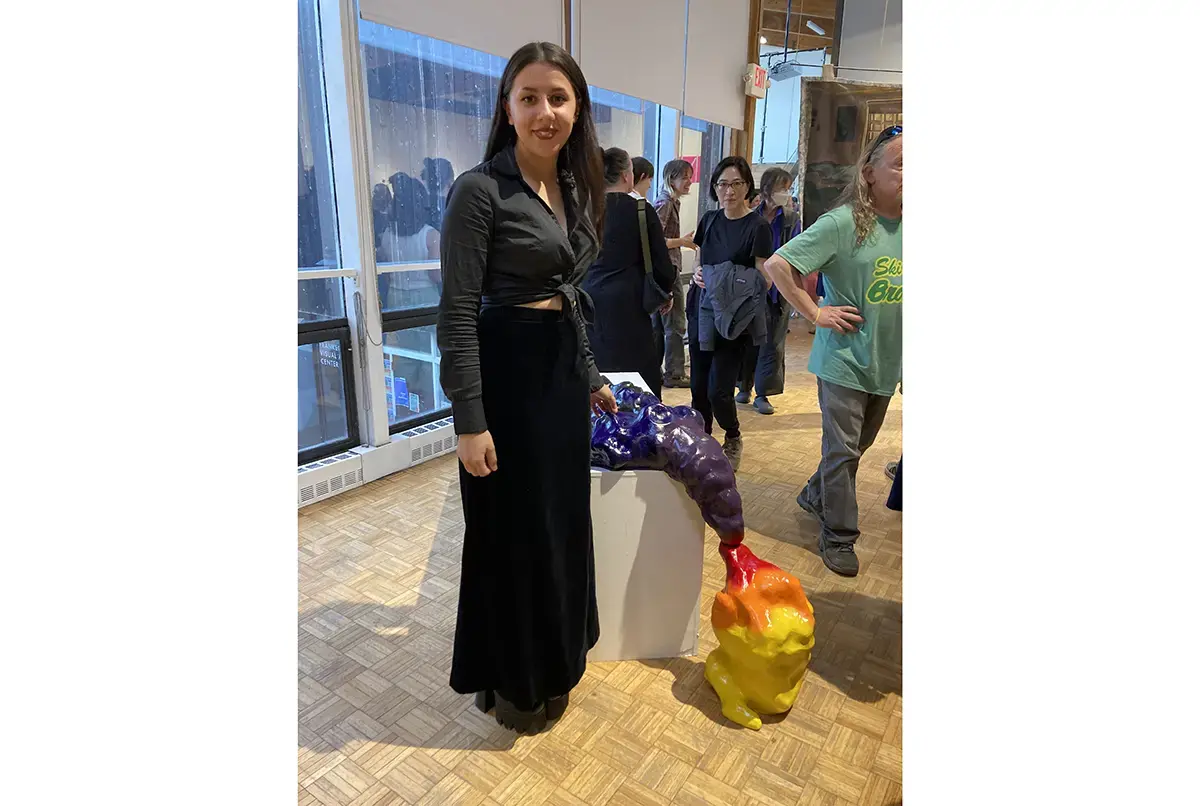
Venturing further into the crowded room revealed the work of Dylan Spencer Kenney ’23, who graduated from Bennington College more than 20 years after she started as a first-year student. In the interim, she raised a family and worked as an art teacher in Vermont and as a director of an after-school program in Martha's Vineyard.
“My mission was to combat wealth segregation and ensure equal access to youth services,” Kenney wrote in an email. “[I’m] striving to create a more inclusive and equitable environment for all.”
Her senior work in Visual Art spans the years and what she calls her “layers of experience.” Her presentation included paint on canvas; found objects; a 3D printed spark plug, inspired by the late former faculty member Milford Graves; broken glass repurposed from a presentation by faculty member John Umphlett MFA ’99; and audio collected over the year from campus. Suspended from the ceiling is a kinetic representation of each and every credit she earned at Bennington.
“My art is intentionally open for interpretation, as I believe that each individual brings their unique perspective and experiences, allowing for diverse meanings and personal connections to be formed,” she shared. “Similarly, credits for college education, which often come with a price tag, represent how society values certain forms of knowledge and skills. Yet, the true worth of education and artistic expression cannot be solely measured by monetary value.”
Kenney included a note from American jazz drummer, percussionist, and former faculty member Graves. The note said, “You are the spark plug and enzyme of this class. You are very mature, and your presence is an inspiration to the other students.” Finding the note was the jolt she needed to return to Bennington for her bachelor’s degree.
Part of Kenney’s work includes developing an initiative with the Center for the Advancement of Public Action (CAPA) to encourage disenfranchised students who left their education to return. Under the guidance of faculty member Susan Sgorbati ’72 MFA ’86, she made significant progress in creating The Bennington Completion program.

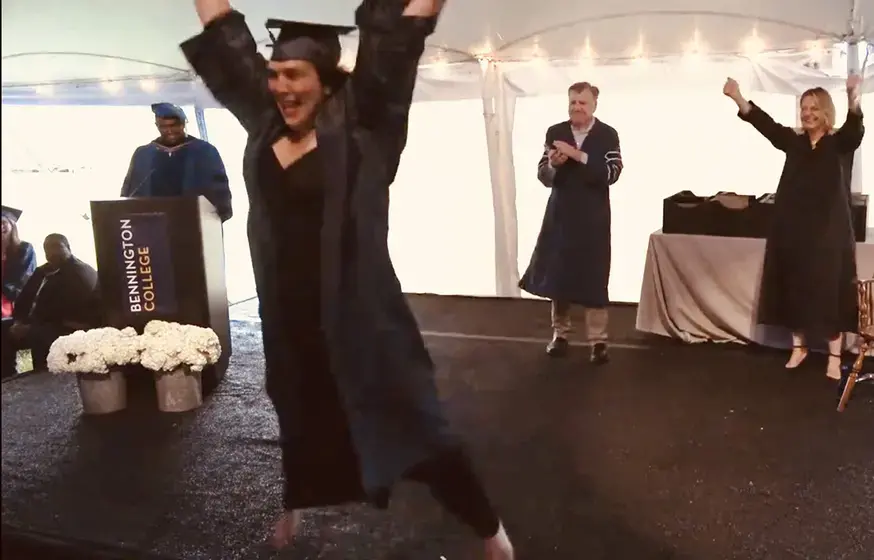
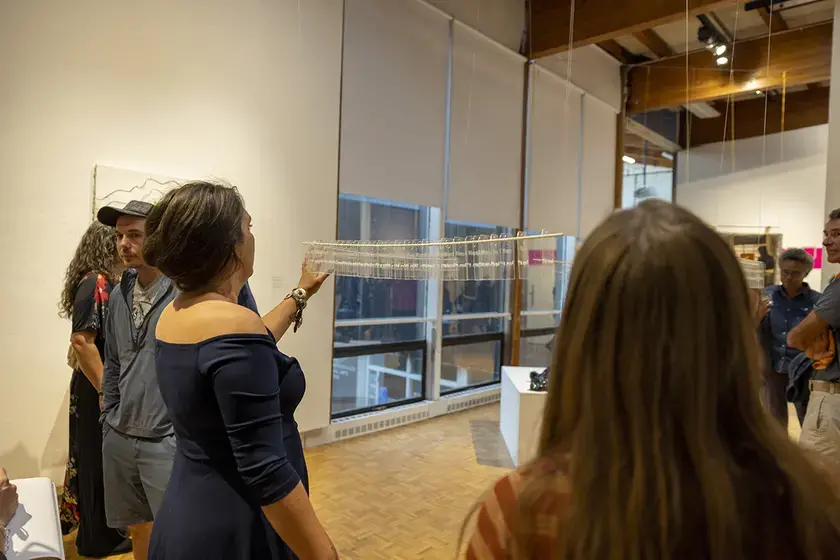
In the center of one of the far rooms in Usdan was a series of transparent and translucent frames strewn with both past and contemporary journal pages. Between and around each frame, a performer wrote or painted or drew or danced or shot video.
This was the work of central Oregonian Jenna Taus ’23, whose senior work was a combination of their queer identity and intense collaboration.
They describe the journal entries they incorporated into the piece. Some were from when they were 18 years old, when they were still using she/her pronouns. Other entries note the experience of traveling the world as a young woman and the constant feeling of being sexualized by others.
“I was always an extremely queer child, and I always made art from a queer mind, a queer body. It was just society that assigned to me what a woman looks like and makes art like and dances like," they said. Dismayed, “Now that I have entirely stepped into and claimed my identity, I am still treated just this same way."
In addition to drawing on their own identity and experiences, Taus asked several collaborators to participate in their senior work.
“They got so excited, and we got to work together so closely on all of these details,” Taus explained.
Each class, friend, family member, teacher, and collaborator has had their role in shaping the work. In that way, Taus explains, it represents the interconnectedness of the community and relates to the extraordinary influence we have on the lives of those around us. It is a way of illustrating the cascading effect of our actions, for good or ill, among the people we encounter and spaces we inhabit.
After Bennington, Taus has plans to complete two residencies in dance and is looking for opportunities to combine their interests in art and restorative justice. Speaking of an organization that would allow them to work across those areas of focus and sounding like a true Benningtonian, they say, “I will find it, or I will make it.”
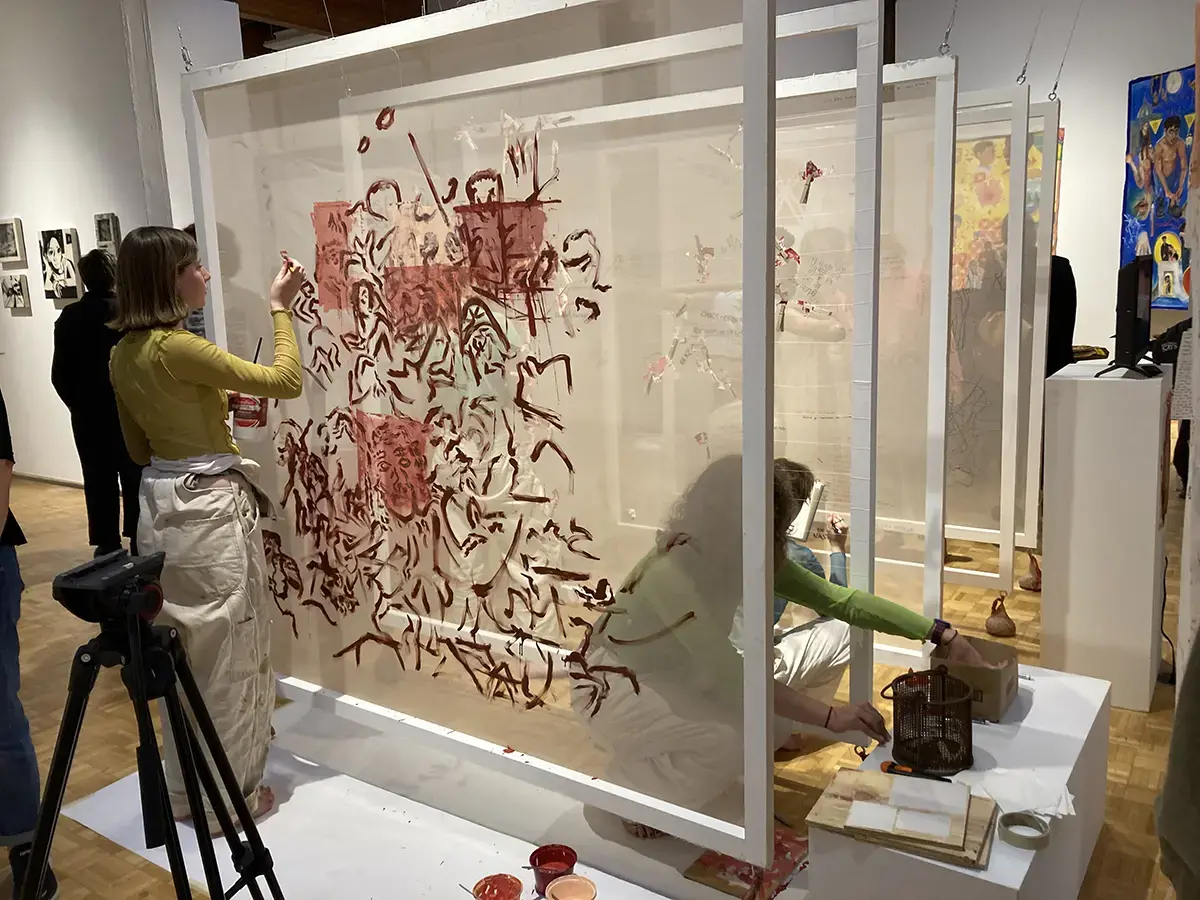
In the furthest corner of the gallery is Paul Norton ’23, who began his senior work as a series of meditative drawings and paintings, some of which are hung on the wall around and under a set of geometric “walls” and a “ceiling” made of woven wire.
“At first, the drawings appeared as physical evidence of an inner, meditative process wrapped up in the rhythm of everyday life,” he said. “Almost as studies in monotony, this repetitive weaving of the linework began to suggest three dimensions. I took this emergence of form as depicting the changes I was going through, and the way in which one’s distinct personality emerges from the indistinct, monotonous rhythm of life. These pieces, this space, is an attempt to subsume the viewer in a field of texture, one in which similar meditative processes can occur.”
The piece is the culmination of his studies here.
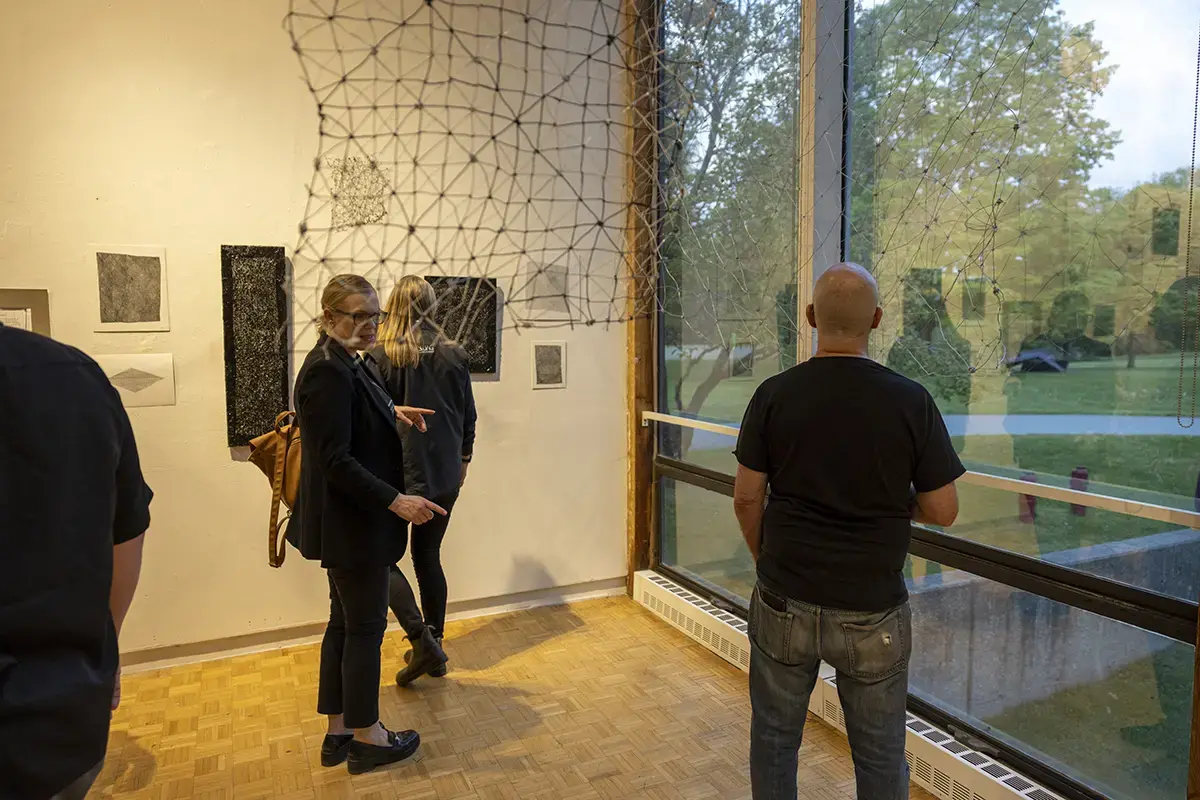
“One of the most important lessons that I have learned in my four years here is to precisely not close myself off in such rooms,” said Norton. “Yes, this is a room I’ve woven, but one with permeable walls. I have taken the architecture of self-isolation and broken out of it to gesture outward, so that my work welcomes in that of my classmates, and makes for a space fostering first isolation and self-reflection, but then through that, finding a new connectivity.”